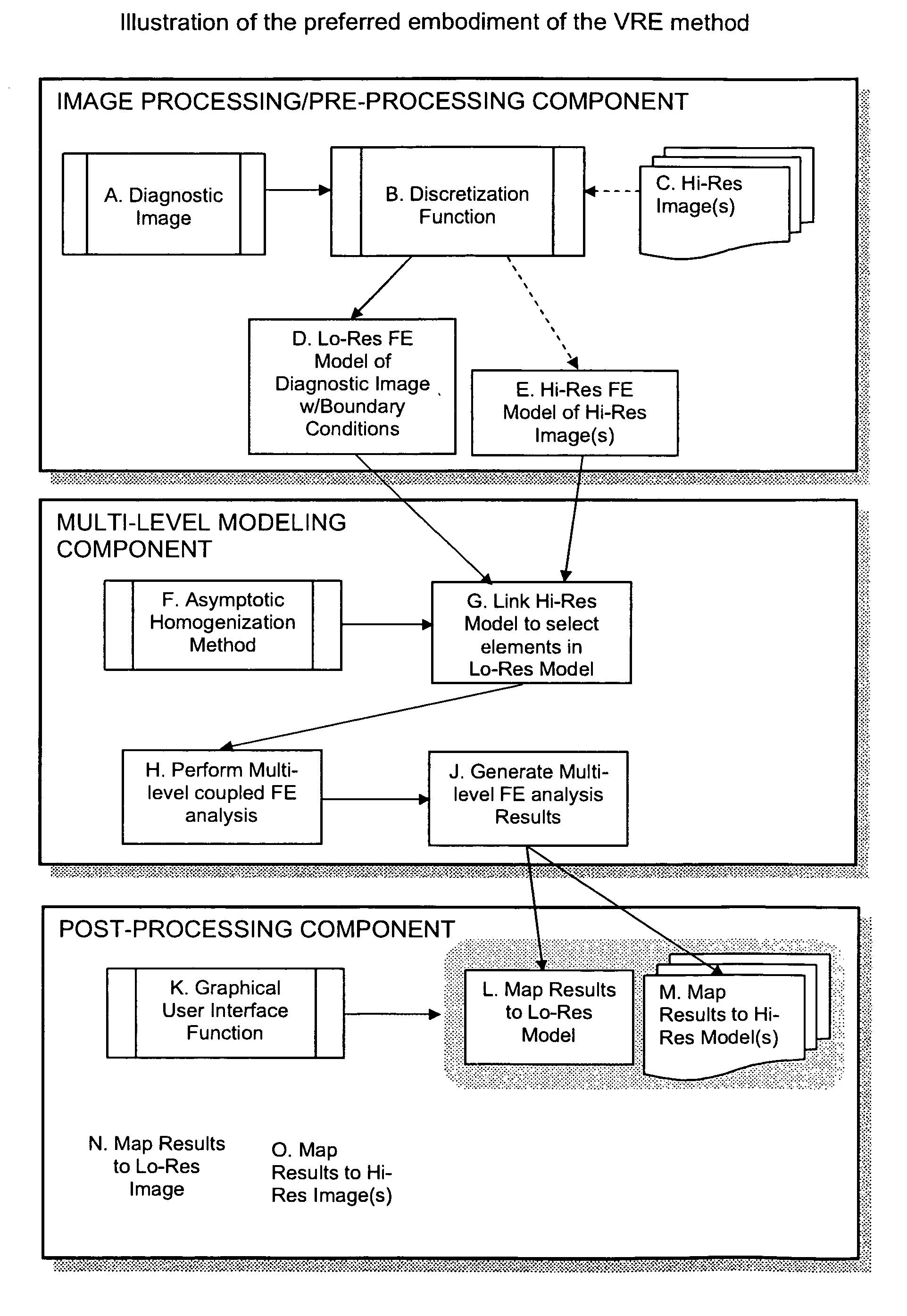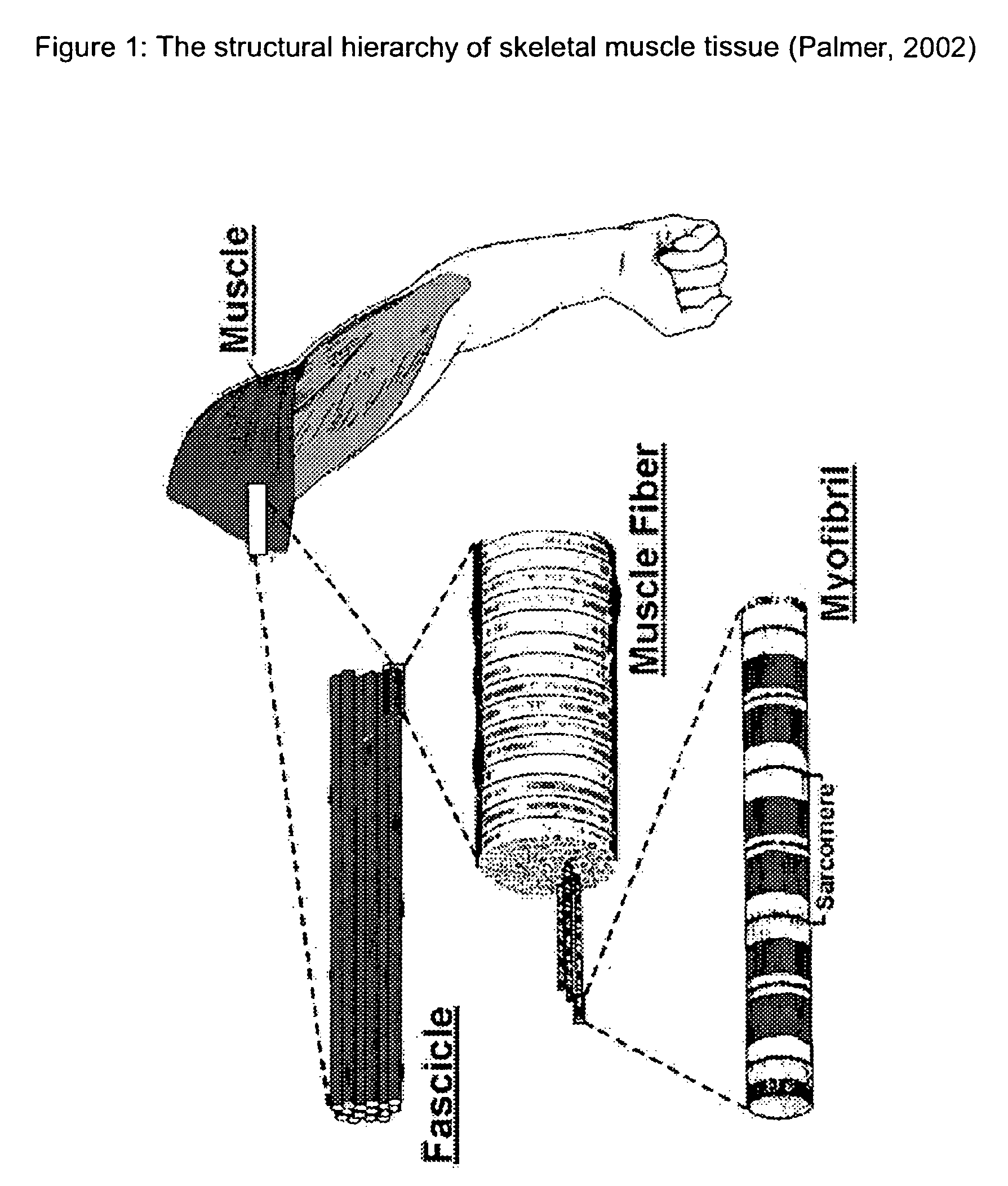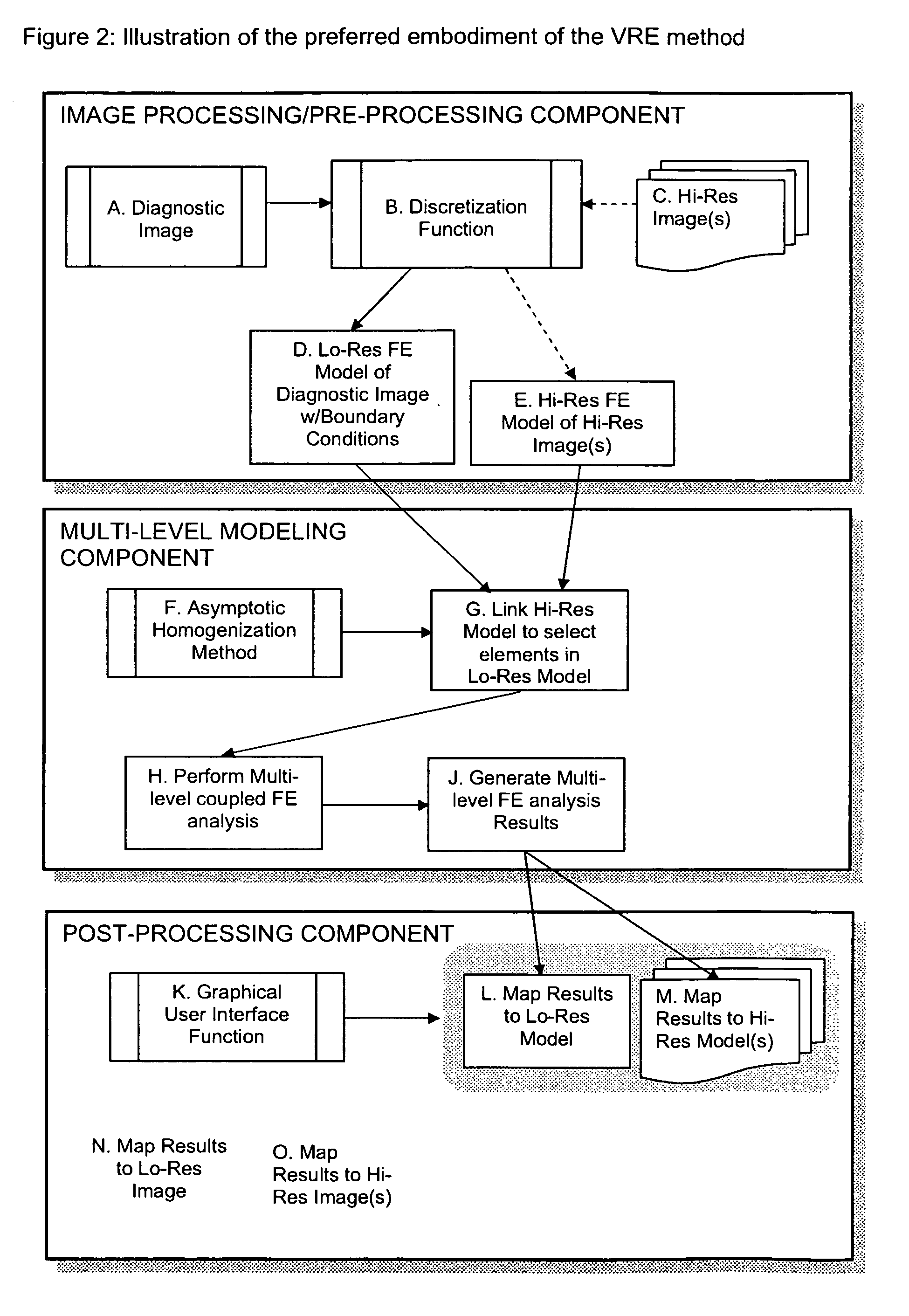Virtual resolution enhancement in diagnostic imaging using FEA
a virtual resolution and diagnostic imaging technology, applied in the field of virtual resolution enhancement of diagnostic imaging using fea, can solve the problems of physical limitations of non-invasive imaging, the clinician's problem of physical limitations, and the patient's energy must be transmitted to the patient, so as to reduce the cost, the effect of reducing the cost and reducing the cost of imaging
- Summary
- Abstract
- Description
- Claims
- Application Information
AI Technical Summary
Benefits of technology
Problems solved by technology
Method used
Image
Examples
Embodiment Construction
[0028] The present invention comprises a method for achieving resolutions higher than those available in a given imaging system by linking via mathematical modeling the image obtained from one imaging modality or setting to higher resolution images obtained in a different modality or setting thereby providing the user with information that would be difficult to visualize or obtain from the original image.
[0029] The present invention is predicated on the fact that the information that is present in a given image or sequence of images is may be difficult to interpret with the naked simply by viewing the image, zooming in on the image, or through processing of that image to highlight certain features. In addition, the information contained in the image may be related to other variables that are important to interpreting the image but in a way that may not be obvious even to a person experienced in reading or interpreting the images. This is particularly true in a biological setting be...
PUM
 Login to View More
Login to View More Abstract
Description
Claims
Application Information
 Login to View More
Login to View More - R&D
- Intellectual Property
- Life Sciences
- Materials
- Tech Scout
- Unparalleled Data Quality
- Higher Quality Content
- 60% Fewer Hallucinations
Browse by: Latest US Patents, China's latest patents, Technical Efficacy Thesaurus, Application Domain, Technology Topic, Popular Technical Reports.
© 2025 PatSnap. All rights reserved.Legal|Privacy policy|Modern Slavery Act Transparency Statement|Sitemap|About US| Contact US: help@patsnap.com



